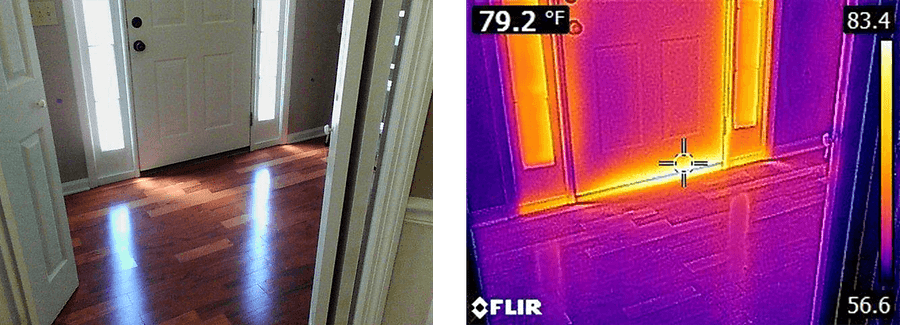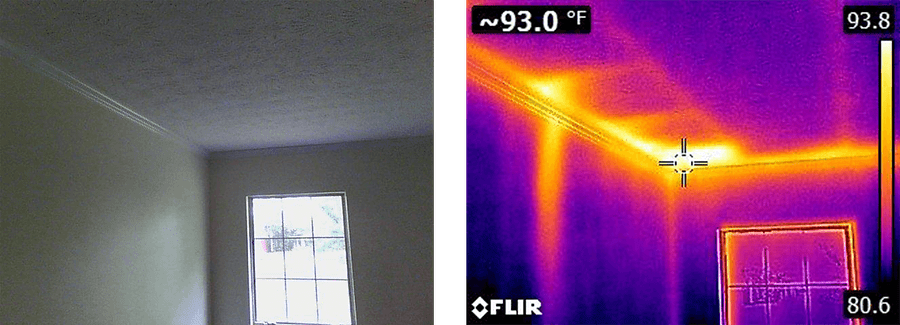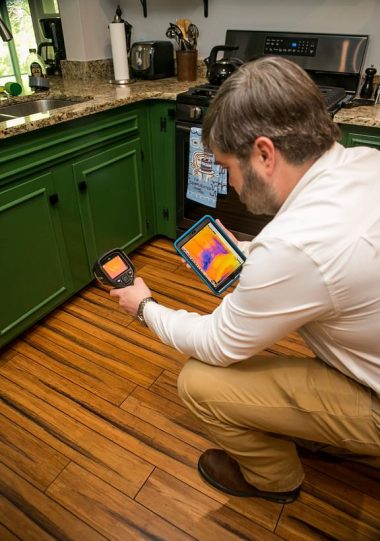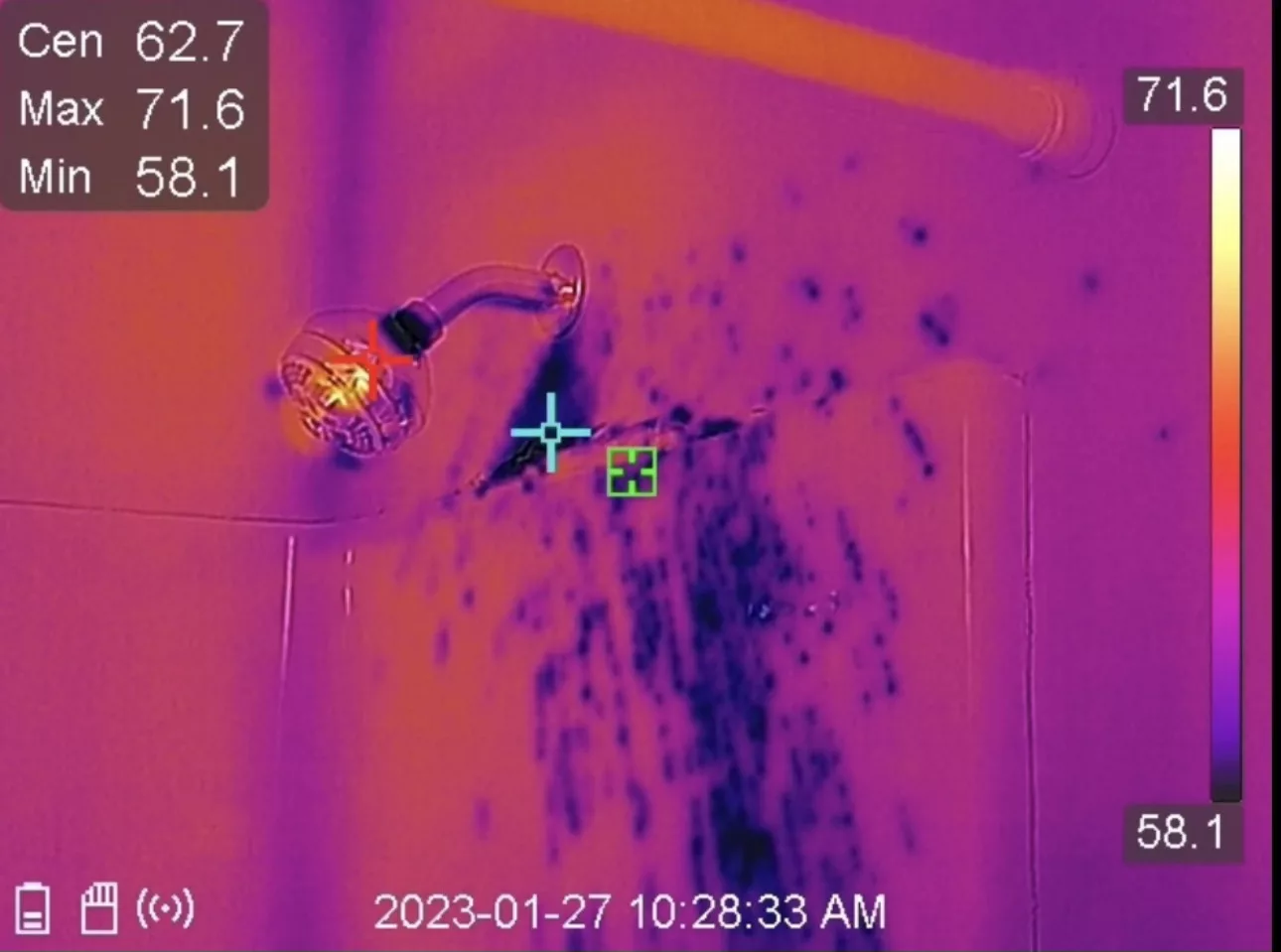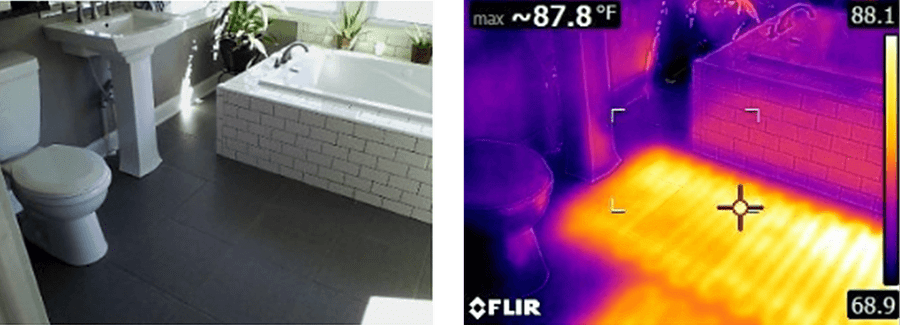INFRARED INspection
Welcome to the exciting world of home buying! As you navigate this process, there is one key element that can’t be overlooked: the infrared inspection. This inspection can save you from potential hazards and inefficiencies lurking within the walls of your dream home.
Picture this: you’re settling into your new home, excited to start your life in this beautiful space. Suddenly, disaster strikes. An electrical fire breaks out, and your new home is quickly engulfed in flames. How could this happen? The truth is, without an infrared inspection, you might not have even known that there were electrical fire hazards lurking in the walls. That’s because these hazards can’t be seen with the naked eye.
But electrical fire hazards aren’t the only thing you need to worry about. Leaks can also wreak havoc on your home. Without an infrared inspection, you might not know that there are leaks in your home until it’s too late. Water damage can be costly to repair, and it can also lead to mold and other harmful issues.
But there’s good news! An infrared inspection can detect both electrical fire hazards and leaks, as well as a host of other potential problems. These inspections use thermal imaging cameras to detect temperature variations within your walls. This technology can detect hot spots that could indicate an electrical fire hazard, as well as cold spots that could indicate a leak.
But that’s not all. Infrared inspections can also help you identify areas where your home is losing energy. This can be a major money-saver in the long run. By identifying areas where your home is losing energy, you can take steps to improve your home’s energy efficiency. This can mean lower energy bills and a more comfortable living space.
So, if you’re in the market for a new home, don’t overlook the importance of an infrared inspection. It could mean the difference between a dream home and a nightmare. Don’t take any chances – make sure to get an infrared inspection and rest easy knowing that your new home is safe and efficient.
Real Infrared INSPECTION Images
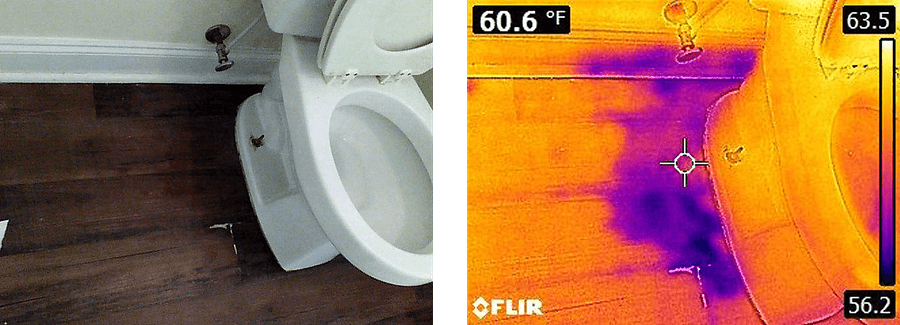
In the photo we see bathroom flooring and a toilet in the infrared image we note that there is a leak emanating from the toilet. Over Time this leak could damage the flooring and subflooring as well as the foundation. Remediation by a qualified plumber was recommended to eliminate this defect and prevent further damage to the home.

In the photo we see two door frames and a sheet rock wall with a doorbell mounted at the top. In the infrared image the yellow areas indicate an inadequate amount of installation within the wall which is causing a heat sink and increasing energy costs for the home as well as placing an increased workload on the HVAC system. It was recommended that I qualified handyman remediate this defect by adding additional insulation.
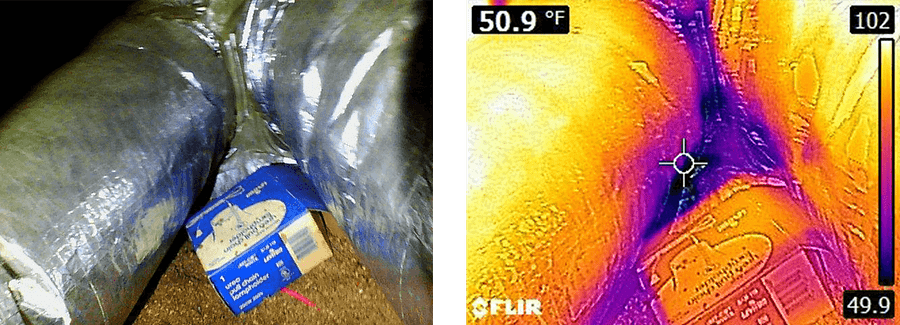
In the photo we see branch ductwork. In the infrared image we note that a significant leak is occurring in the dark areas at the branch within the ductwork. The temperature within the crosshairs is at 50.9°F. It was recommended that a qualified HVAC specialist or qualified handyman remediate this leak with foil tape and duct mud to eliminate the leak and increase the energy efficiency of the HVAC system as well as lower utility cost for the home.
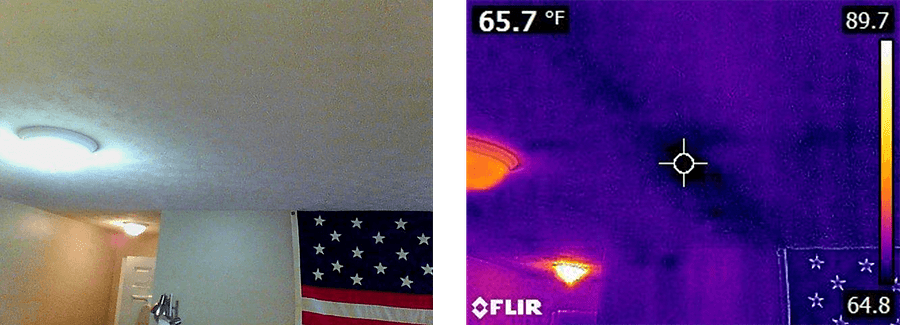
In the photo we see a wall and ceiling for a condominium unit. In the infrared image we note that a significant condensation leak is occurring just below the ductwork for the condominium unit. After following this image up with a moisture meter reading it was determined that the moisture content in the dark blue area was at 36% while the moisture content in the control area is 4 feet away from the dark blue area was at 11%, this indicates a significant condensate leak. To eliminate this leak and reduce the possibility of microbial growth within the condominium unit it was recommended that the sheet rock be removed and the ductwork be properly insulated and the sheet rock be replaced and repainted.
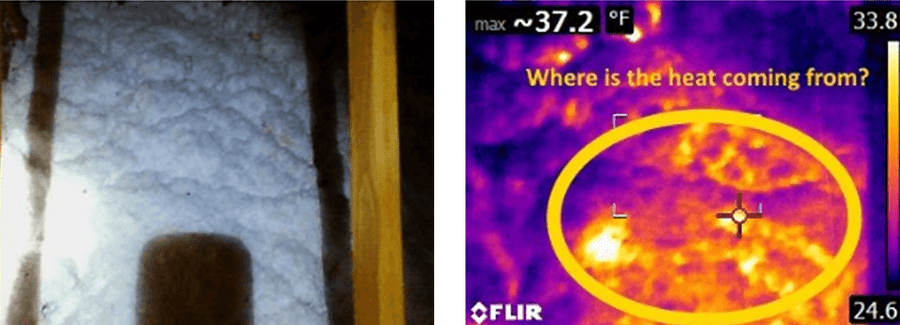
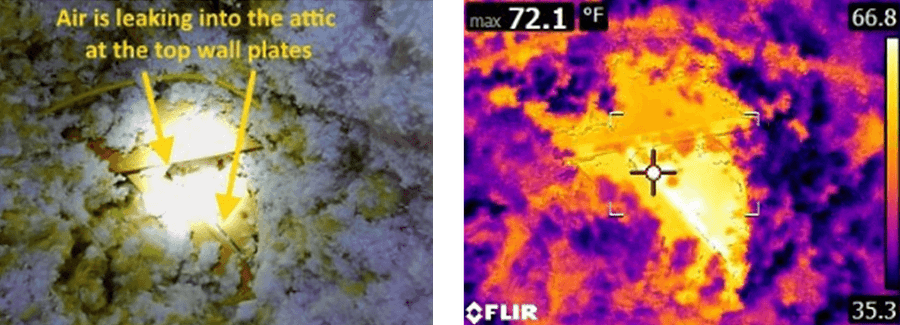
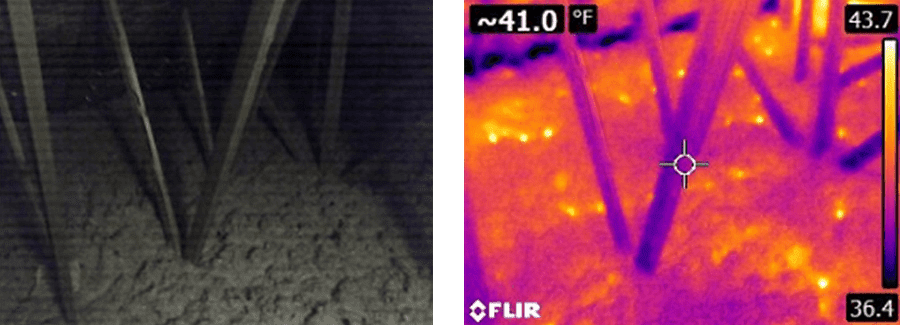
The infrared camera is also useful in identifying attic bypasses where heat is transferred from the conditioned air space into the attic freely. In the images above excessive heat transfer is noted around the recessed lights and where the top plate was not properly sealed. We also see where the infrared camera is useful in the attic and identifying mouse holes within the insulation which indicates the need for a pest control service.

Infrared cameras are also helpful in identifying whether a water stain on sheet rock is active or inactive.

In the infrared image collapsed glass is noted by the dark ovals that are present in the window panes. This is a condition which is caused by the gas which is trapped between the two panes, to increase thermal efficiency, the gas escaping pulls the two panes of glass closer together. This is different from a failed seal, where condensation accumluates between the two panes.
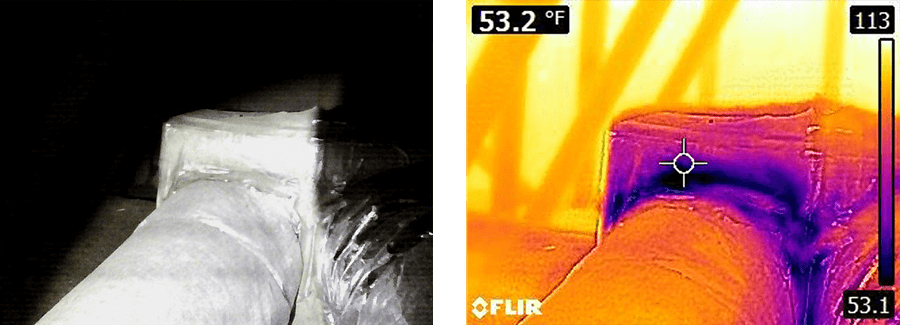
In the photo we see ductwork, in the infrared image we note that the dark area is at 53.2°F and the ambient temperature of the attic is at 113°F, this indicates a significant leak within the ductwork which is placing an increased workload on the HVAC system (possibly shortening its expected lifespan) and also increasing energy costs for the home and lowering energy efficiency. It was recommended that remediation be conducted by a qualified HVAC specialist or a qualified handyman to apply foil tape and duct mud to properly seal the ductwork leak.
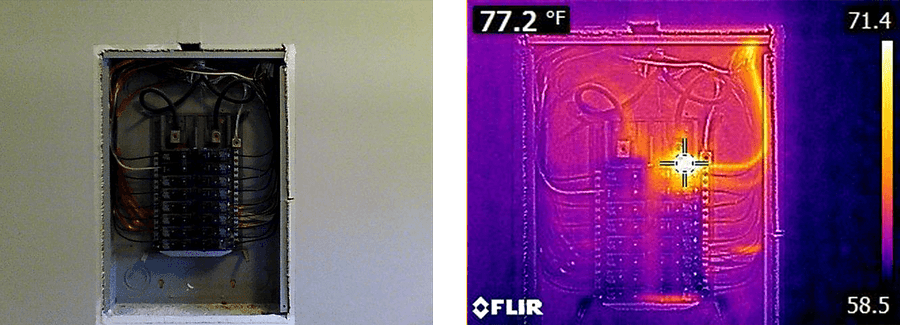
In the photo we see an electrical panel for the home. In the infrared image we note that one circuit breaker is operating at 77.2°F which is within the normal range. Infrared images with an amp meter can indicate when circuit breaker’s and branch circuitry wiring are operating at safe temperatures and have an excessive amperage load, which could indicate a possible fire hazard.
